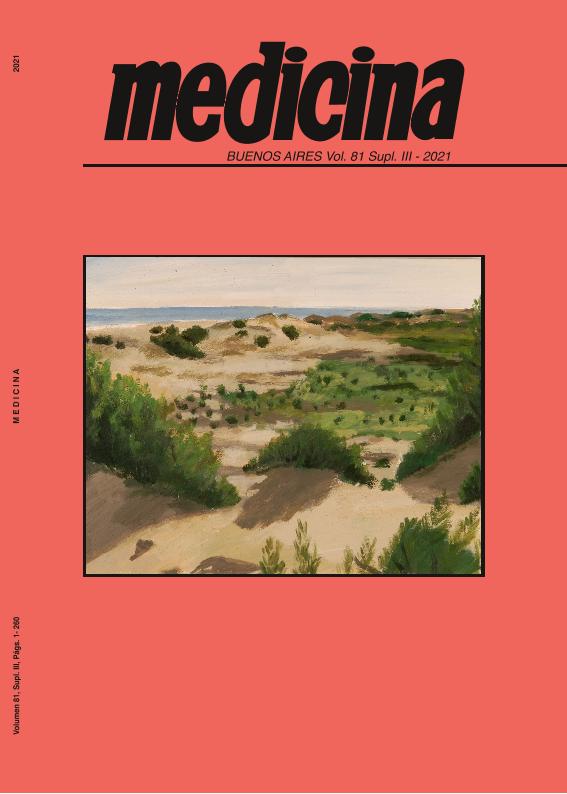Evento
Copper chelation inhibits angiogenesis and modulates the oxidative imbalance in a model of endometriosis
Conforti, Rocío Ayelem ; Delsouc, María Belén
; Delsouc, María Belén ; Vitale, Daiana Luján
; Vitale, Daiana Luján ; Alaniz, Laura Daniela
; Alaniz, Laura Daniela ; Zabala, Ana Sofia
; Zabala, Ana Sofia ; Zapata, Florencia; Vallcaneras, Sandra
; Zapata, Florencia; Vallcaneras, Sandra ; Casais, Marilina
; Casais, Marilina
 ; Delsouc, María Belén
; Delsouc, María Belén ; Vitale, Daiana Luján
; Vitale, Daiana Luján ; Alaniz, Laura Daniela
; Alaniz, Laura Daniela ; Zabala, Ana Sofia
; Zabala, Ana Sofia ; Zapata, Florencia; Vallcaneras, Sandra
; Zapata, Florencia; Vallcaneras, Sandra ; Casais, Marilina
; Casais, Marilina
Tipo del evento:
Reunión
Nombre del evento:
LXVI Reunión Anual de la Sociedad Argentina de Investigación Clínica; LXIX Reunión Anual de la Sociedad Argentina de Inmunología; LIII Reunión Anual de la Asociación Argentina de Farmacología Experimental y XI Reunión Anual de la Asociación Argentina de Nanomedicinas
Fecha del evento:
16/11/2021
Institución Organizadora:
Sociedad Argentina de Inmunología;
Asociación Argentina de Farmacología Experimental;
Asociación Argentina de Nanomedicinas;
Sociedad Argentina de Investigación Clínica;
Título de la revista:
Medicina
Editorial:
Fundacion Revista Medicina
ISSN:
1669-9106
Idioma:
Inglés
Clasificación temática:
Resumen
Endometriosis (EDT) is an estrogen-dependent disease that affects 5-15% of reproductive-aged women. It is characterized by the growth of endometrial-like tissue outside the uterine cavity and often causes chronic pelvic pain and subfertility. Currently, EDT has no cure, and there is an unmet need for new treatment options. Angiogenesis is essential for the growth of endometriotic implants because it ensures an adequate supply of oxygen and nutrients and the removal of waste products. Elevated copper (Cu) levels have been linked to EDT. Cu is required by many enzymes, some involved in the antioxidant system. In cancer, this metal promotes angiogenesis, tumor progression, and oxidative stress. Therefore, our objective was to evaluate the effect of Cu chelation with ammonium tetrathiomolybdate (TM) on angiogenesis and oxidative stress in endometriotic-like lesions. Sixteen female C57BL/6 mice were divided into two experimental groups: EDT and EDT+TM. The EDT induction was performed by autologous uterine tissue transplantation to the intestinal mesentery. The EDT+TM group received 0.30 mg of TM/day in their drinking water for two weeks from the postoperative 15th day. Bodyweight and hematocrit were periodically monitored. Endometriotic-like lesions were collected one month after the pathology was induced to analyze the expression of angiogenic markers (RTqPCR), the presence of endothelial cells (immunofluorescence), and oxidative stress (spectrophotometric methods). Treatment with TM induced anti-angiogenic effects by decreasing the number of blood vessels (p<0.001), the mRNA expression of Fgf2 and Pdgfb (p<0.05), and the presence of endothelial cells (p<0.001). Besides, it decreased antioxidant activity (SOD and CAT, p<0.05) and increased lipid peroxidation (TBARS, p<0.05). In conclusion, TM acts as an effective anti-angiogenic agent and modulates the oxidative imbalance in EDT. These observations support the study of TM as a possible non-hormonal treatment for EDT.
Palabras clave:
ENDOMETRIOSIS
,
AMMONIUM TETRATHIOMOLYBDATE
,
ANGIOGENESIS
,
OXIDATIVE STRESS
Archivos asociados
Licencia
Identificadores
Colecciones
Eventos(IMIBIO-SL)
Eventos de INST. MULTIDICIPLINARIO DE INV. BIO. DE SAN LUIS
Eventos de INST. MULTIDICIPLINARIO DE INV. BIO. DE SAN LUIS
Citación
Copper chelation inhibits angiogenesis and modulates the oxidative imbalance in a model of endometriosis; LXVI Reunión Anual de la Sociedad Argentina de Investigación Clínica; LXIX Reunión Anual de la Sociedad Argentina de Inmunología; LIII Reunión Anual de la Asociación Argentina de Farmacología Experimental y XI Reunión Anual de la Asociación Argentina de Nanomedicinas; Buenos Aires; Argentina; 2021; 243-243
Compartir



